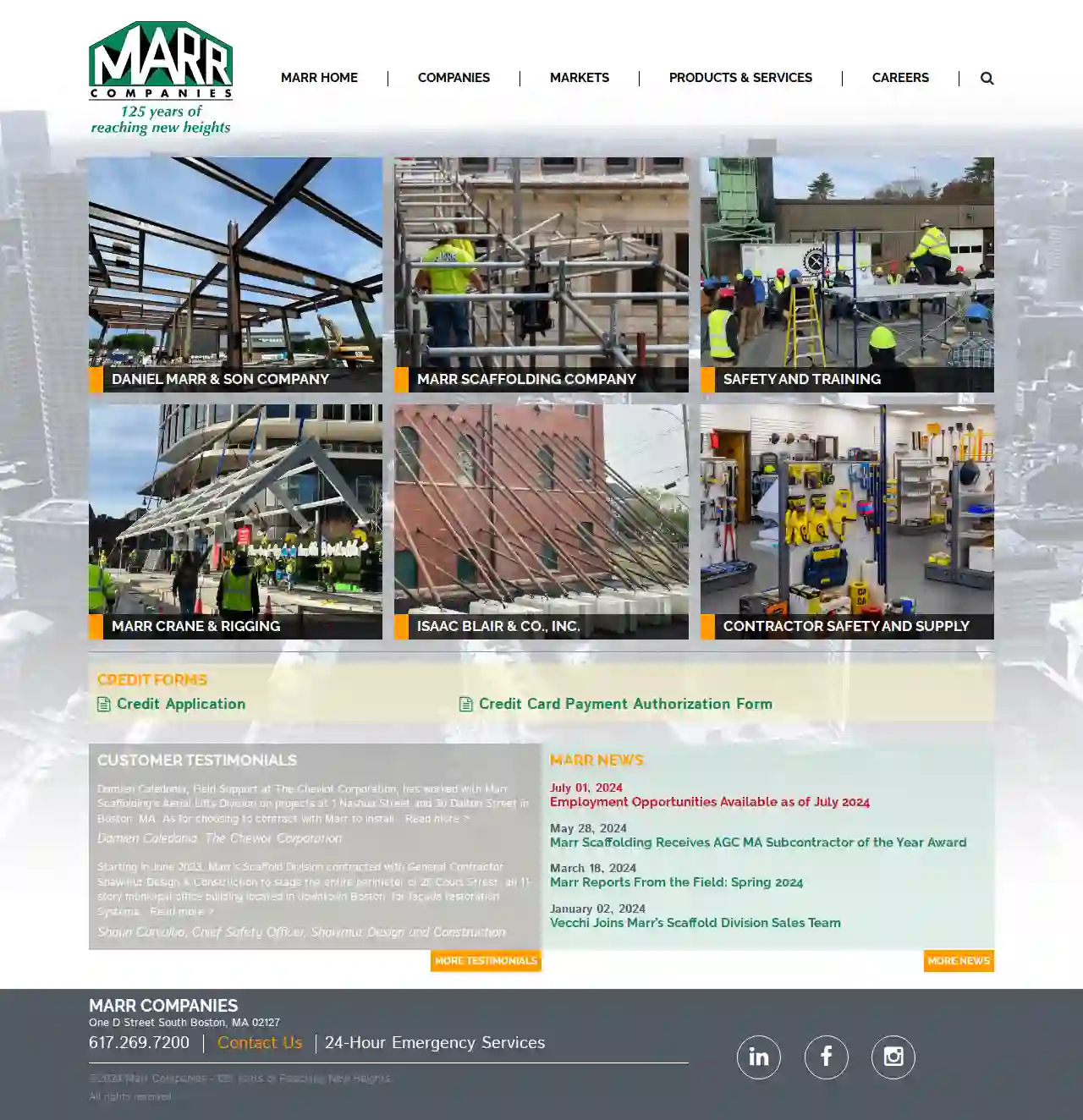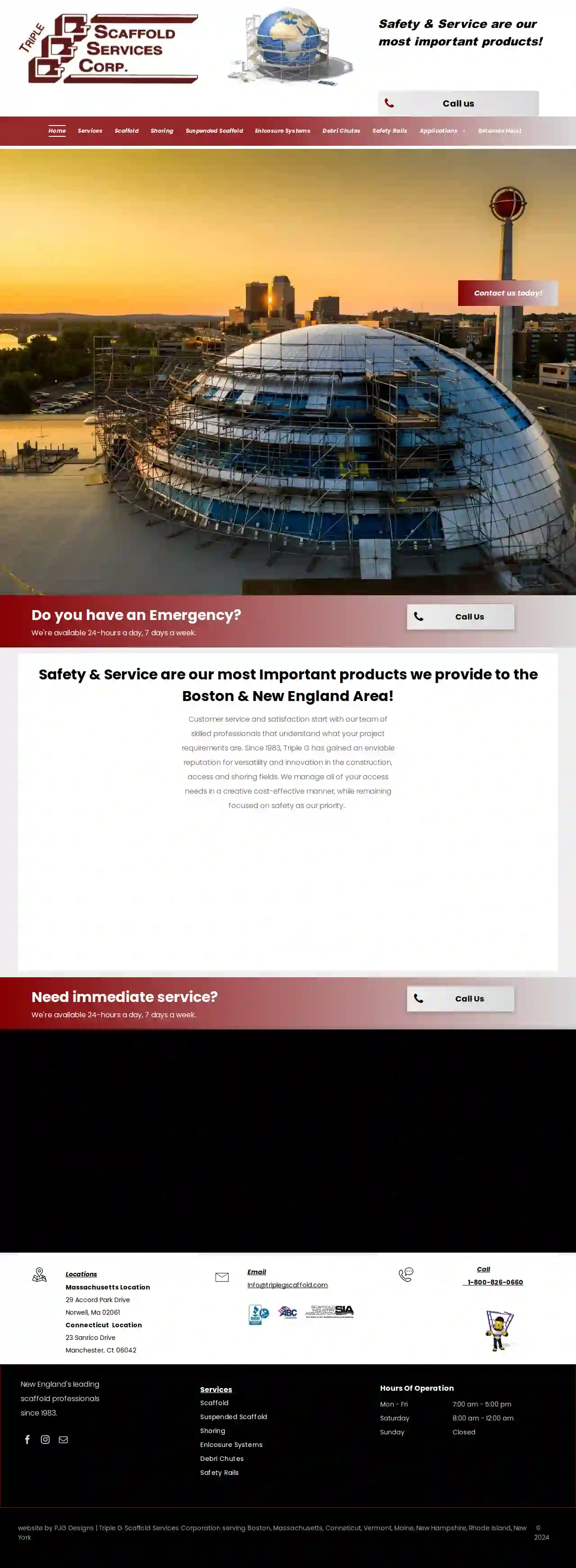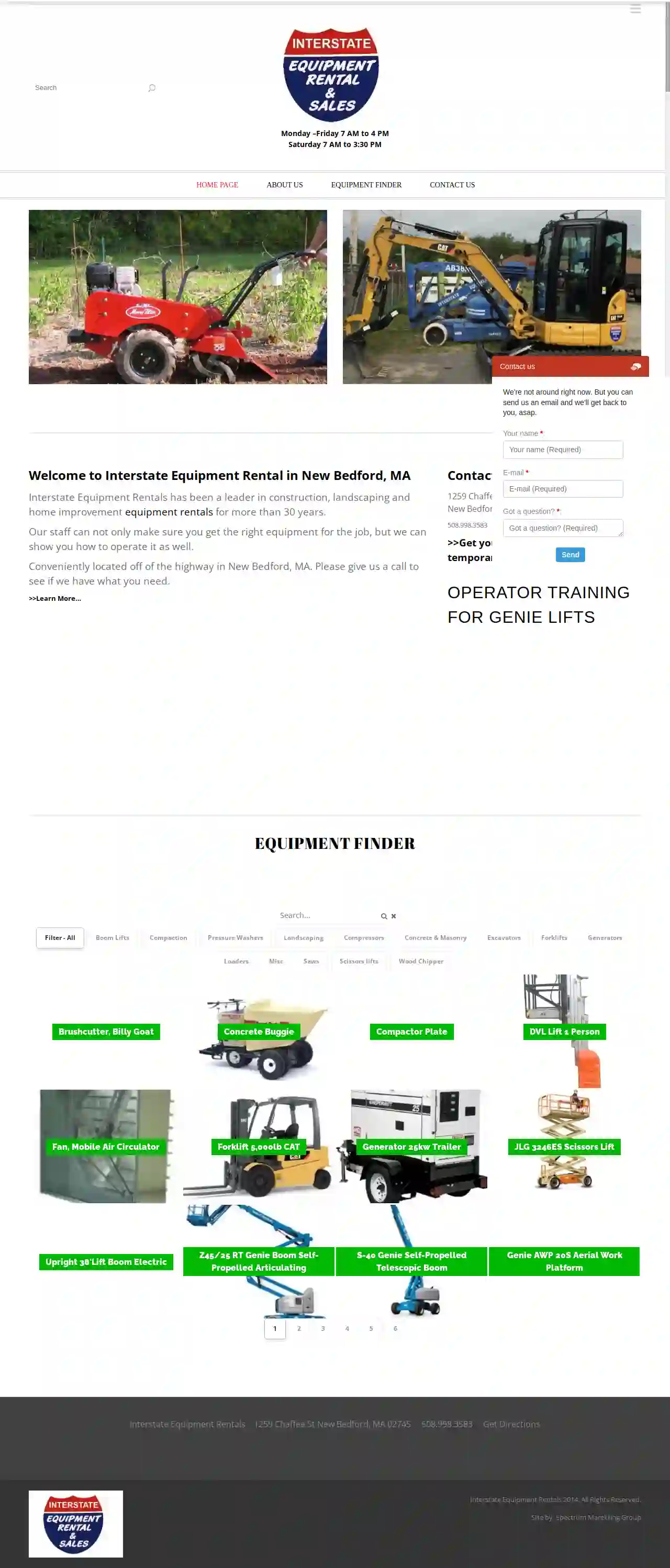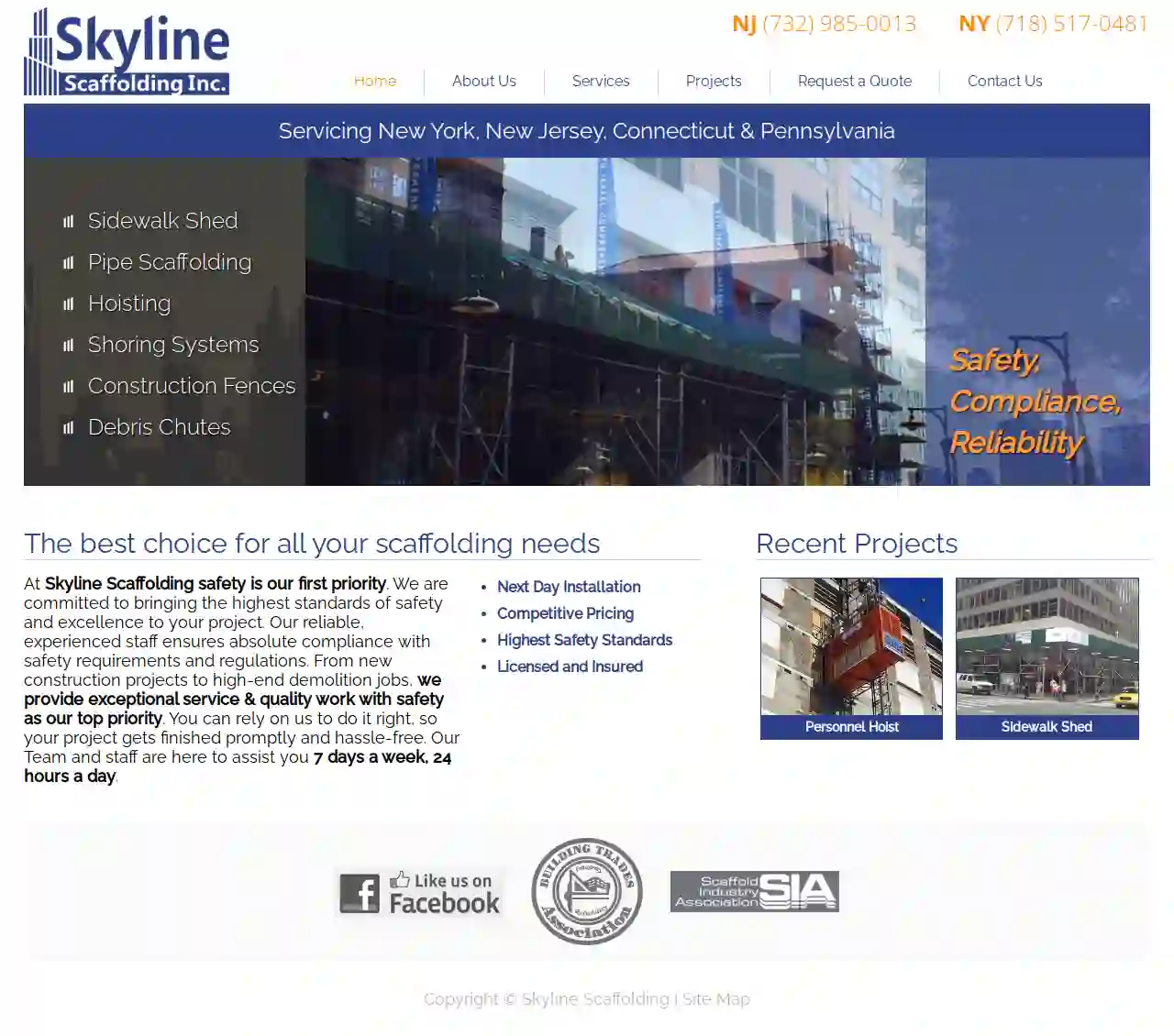Scaffolding Companies Littleton
Top Construction Scaffolding in Littleton
Receive multiple Scaffolding Experts quotes for your project today! Compare profiles, reviews, accreditations, portfolio, etc... and choose the best service.

Marr Scaffolding Company - Providence
44 reviewsOne D Street South Boston, MA, Boston, 02127, USMarr Companies: A Legacy of Excellence For over 125 years, Marr Companies has been a trusted leader in the construction industry, providing a wide range of services and products to meet the needs of our clients. Our commitment to safety, quality, and customer satisfaction has earned us a reputation for excellence throughout the region. Our Mission Our mission is to provide our clients with the highest quality construction services and products, delivered safely and efficiently. We strive to build lasting relationships with our clients, based on trust, respect, and a shared commitment to excellence. Our Values Our values guide everything we do. We are committed to: Safety First Quality Workmanship Customer Satisfaction Integrity and Ethics Teamwork and Collaboration Our Experience Our team of experienced professionals has a deep understanding of the construction industry and a proven track record of success. We are committed to providing our clients with the best possible service and support, from the initial planning stages to the final completion of the project.
- Services
- Why Us?
- Gallery
Get Quote
Zicklin Contracting Corp.
4.964 reviews967 Longfellow Ave, Bronx NY, Bronx, 10474, USZicklin Construction is a family-owned general contracting company that has been serving the five boroughs of New York City and parts of Nassau and Westchester counties for over 37 years. We specialize in providing complete house renovation, apartment renovation, basement remodeling, exterior services including masonry and pavers, roofing installation, repair, and maintenance, interior renovation, and more. Our team is dedicated to ensuring full compliance with ease and providing protective and repair services with confidence. We are fully accredited and insured, and our team is available 24/7 for emergency services.
- Services
- Why Us?
- Accreditations
- Our Team
- Testimonials
- Gallery
Get Quote
Lynn Ladder & Scaffolding Co., Inc.
4.36 reviewsCharlotte, NC, 3801 Corporation Cir, 28216, USLynn Ladder & Scaffolding has been a family-owned business since 1946. Founded by Bernie Kline, the company has been dedicated to providing high-quality ladders and scaffolding to contractors in the New England area. Today, the third generation of Kline's continues to pursue this goal across the Eastern United States. With a focus on service and quality, Lynn Ladder strives to provide reasonably priced, high-quality products in a timely manner. The company offers a range of products, including frame scaffold, stages and planks, van and truck racks, ladders, hydro mobile, system scaffold, alum-a-pole, shoring, debris chutes, fall protection, swing stage, and more. With over 65 years of service, Lynn Ladder has established itself as a trusted provider of rental equipment and specialty products. The company's qualified employees can handle the scaffold needs of contractors, both large and small, and offer safety training programs to ensure the well-being of employees and customers. At Lynn Ladder, the employees are the most valuable asset, making up the heart of the company. From warehouse crews to corporate staff, each and every one of them is essential to the company's success.
- Services
- Why Us?
- Accreditations
- Gallery
Get Quote
Scaffold Express
4.129 reviews19902 Hufsmith-Kohrville Rd, Tomball, 77375, USAt Scaffold Express, we're passionate about providing quality scaffolding solutions for construction projects. Our USA-designed scaffolding systems are built to last, ensuring your projects rise to new heights effortlessly. With a wide range of products, including tower kits, scaffold frames, system scaffold, and shoring accessories, we're your one-stop shop for all your scaffolding needs. Our team of experts is dedicated to providing reliable service and ready-to-ship products, ensuring your projects are completed on time and within budget. Contact us today to learn more about our products and services.
- Services
- Why Us?
- Gallery
Get Quote
Triple G Scaffold Services Corporation
4.610 reviews29 Accord Park Drive, Norwell, 02061, USSafety & Service are our most important products! Call us Safety & Service are our most Important products we provide to the Boston & New England Area! Customer service and satisfaction start with our team of skilled professionals that understand what your project requirements are. Since 1983, Triple G has gained an enviable reputation for versatility and innovation in the construction, access and shoring fields. We manage all of your access needs in a creative cost-effective manner, while remaining focused on safety as our priority.
- Services
- Why Us?
- Gallery
Get Quote
Interstate Equipment Rental & Sales
4.327 reviews1259 Chaffee St, New Bedford, 02745, USWelcome to Interstate Equipment Rental in New Bedford, MA. Interstate Equipment Rentals has been a leader in construction, landscaping and home improvement equipment rentals for more than 30 years. Our staff can not only make sure you get the right equipment for the job, but we can show you how to operate it as well. Conveniently located off of the highway in New Bedford, MA. Please give us a call to see if we have what you need.
- Services
- Why Us?
- Gallery
Get Quote
Lynn Ladder & Scaffolding Co., Inc.
4.253 reviews25 Fordham Rd, Lynn, 01902, USLynn Ladder was founded in 1946 by Bernie Kline with a mission to provide ladders and scaffolding to contractors in the New England area. Today, the third generation of Kline's continue to pursue that goal across the Eastern United States. Service and quality are paramount in this endeavor. At each of the Lyn-Lad companies, we strive to provide each of our customers with reasonably priced, high quality products in a timely manner. One of the main focuses of our company is rental equipment. This is backed by over 45 years of scaffolding experience. Our qualified employees can handle the scaffold needs of contractors, both large and small. Our services range from engineering to manufacturing specialty products that are required by contractors to complete their jobs. We continue to manufacture many products in the United States. This provides many local jobs and allows us to make different custom products with a quick turnaround, giving us a competitive edge. Safety is always a factor in renting and selling the many products we manufacture and distribute. Lyn-Lad has offered safety training programs for many years. We will continue to do so for the safety of our employees and customers. It is our employees that comprise our most valuable asset at the Lyn –Lad companies. Each and every one of them makes up the heart of the Lyn-Lad Companies. From our warehouse crews to our corporate staff, we could not succeed without them.
- Services
- Why Us?
- Accreditations
- Gallery
Get Quote
Lanco Scaffolding, Inc.
32 reviews123 Main St, Boston, MA, 02101, USLanco Scaffolding Inc. is a reputable scaffolding contractor and rental service provider, specializing in the installation, maintenance, and dismantling of various scaffolding structures. With a team of experienced professionals, we prioritize safety and efficiency in all our projects, ensuring that every project is completed safely and within budget. We offer a wide range of scaffolding options and rental rates that are competitive and affordable, making us the top choice for scaffolding in the New England area.
- Services
- Why Us?
- Accreditations
- Our Team
- Testimonials
- Gallery
Get Quote
Commonwealth Scaffold
59 reviews88 Eastern Ave, Malden, 02148, USWe Build Safe, So You Can Build Safer Commonwealth Scaffold, LLC serves Boston and the New England area market and is committed to providing our customers with the highest quality scaffolding products and service. Our History A union company with a focus on safety and bringing innovative solutions to complex jobsites. Commonwealth Scaffold, founded in 2007 by Luke McKinnon and Peter Volpe, is a Boston based scaffolding contractor servicing the New England area with the highest quality scaffolding planning and erection. Our main objective is to deliver safe and innovative solutions to your difficult builds. We use experience, open communications, a safety oriented approach and innovative design to accomplish our clients’ goals and needs. Our extensive portfolio of specialized services includes: scaffolding, coatings, insulation, refractory, formwork and shoring, specialty mechanical services, trash chutes and other related crafts. Our Approach Experience A team with unrivaled experience and leading edge training. Communication Managment that listens to our clients unique challenges and goals. Safety A focus on safety to keep your jobsite injury-free and on schedule. Innovation Solution oriented approach to complex builds and jobsites.
- Services
- Why Us?
- Our Team
- Gallery
Get Quote
Skyline Scaffolding Group, Inc.
4.49 reviews740 Ramsey Avenue, Hillside, 07205, USAt Skyline Scaffolding, safety is our top priority. We are committed to bringing the highest standards of safety and excellence to your project. Our reliable, experienced staff ensures absolute compliance with safety requirements and regulations. From new construction projects to high-end demolition jobs, we provide exceptional service & quality work with safety as our top priority. We have over 25 years of experience in the field of scaffolding and bring that experience to your project. We are passionate about what we do and look for ways to provide the best possible service to our clients. For our customer’s convenience, we provide all of our services to New York, New Jersey, Pennsylvania, and Connecticut.
- Services
- Why Us?
- Accreditations
- Our Team
- Gallery
Get Quote
Over 2,353+ Scaffolding Businesses on our platform
Our scaffolding experts operate in Littleton & surroundings!
ScaffoldingHQ has curated and vetted the Best Scaffolding Businesses in and around Littleton. Find a top & reliable pro today.
Frequently Asked Questions About Scaffolding Companies
- Regulations: Local regulations often specify minimum inspection intervals.
- Project Type and Duration: Long-term projects or those in challenging environments may require more frequent inspections.
- Weather Conditions: Severe weather (storms, high winds) can necessitate additional inspections.
- Any Alterations or Modifications: Any changes to the scaffolding structure require re-inspection.
- A larger, more complex structure typically used for accessing multiple levels of a building.
- Offers greater height and versatility.
- Often used for construction, renovation, and maintenance.
- Smaller, portable platforms usually used for tasks at a single level.
- Commonly used for painting, plastering, or light repairs.
- Can be rolling or stationary.
- Falls from Height: The most significant risk, often due to lack of guardrails, improper use of safety harnesses, or unstable platforms.
- Falling Objects: Tools, materials, or debris falling from the scaffolding can injure workers or people below.
- Scaffold Collapse: Improper assembly, overloading, or inadequate foundation support can lead to a catastrophic collapse.
- Electrocution: Contact with overhead power lines is a serious hazard when working near electrical infrastructure.
- Slips, Trips, and Falls: Wet or cluttered platforms, uneven surfaces, and loose debris can cause falls.
- Mobile Elevated Work Platforms (MEWPs): Scissor lifts, boom lifts, and other MEWPs offer flexible access for specific tasks.
- Mast Climbing Work Platforms (MCWPs): Ideal for high-rise construction, providing a stable working platform that can be raised incrementally.
- Suspended Access Equipment: Ropes and harnesses used for specific tasks like window cleaning or façade repairs.
- Ladders and Step Ladders: For shorter durations and limited working heights, provided they are used safely and appropriately.
How often should scaffolding be inspected?
What is the difference between scaffolding and staging?
Scaffolding:
What are some common scaffolding safety hazards?
What are some alternatives to traditional scaffolding?
How often should scaffolding be inspected?
- Regulations: Local regulations often specify minimum inspection intervals.
- Project Type and Duration: Long-term projects or those in challenging environments may require more frequent inspections.
- Weather Conditions: Severe weather (storms, high winds) can necessitate additional inspections.
- Any Alterations or Modifications: Any changes to the scaffolding structure require re-inspection.
What is the difference between scaffolding and staging?
Scaffolding:
- A larger, more complex structure typically used for accessing multiple levels of a building.
- Offers greater height and versatility.
- Often used for construction, renovation, and maintenance.
- Smaller, portable platforms usually used for tasks at a single level.
- Commonly used for painting, plastering, or light repairs.
- Can be rolling or stationary.
What are some common scaffolding safety hazards?
- Falls from Height: The most significant risk, often due to lack of guardrails, improper use of safety harnesses, or unstable platforms.
- Falling Objects: Tools, materials, or debris falling from the scaffolding can injure workers or people below.
- Scaffold Collapse: Improper assembly, overloading, or inadequate foundation support can lead to a catastrophic collapse.
- Electrocution: Contact with overhead power lines is a serious hazard when working near electrical infrastructure.
- Slips, Trips, and Falls: Wet or cluttered platforms, uneven surfaces, and loose debris can cause falls.
What are some alternatives to traditional scaffolding?
- Mobile Elevated Work Platforms (MEWPs): Scissor lifts, boom lifts, and other MEWPs offer flexible access for specific tasks.
- Mast Climbing Work Platforms (MCWPs): Ideal for high-rise construction, providing a stable working platform that can be raised incrementally.
- Suspended Access Equipment: Ropes and harnesses used for specific tasks like window cleaning or façade repairs.
- Ladders and Step Ladders: For shorter durations and limited working heights, provided they are used safely and appropriately.